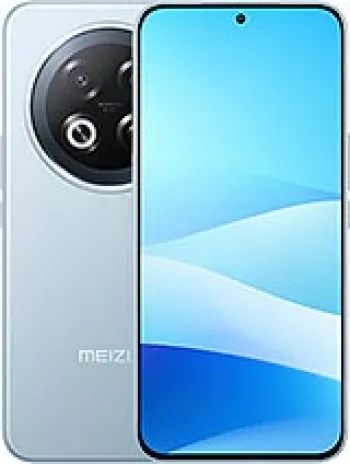
Overview of the Meizu M3 Note
The Meizu M3 Note, announced in April 2016, made a notable entry into the mid-range smartphone market segment. Although it has been discontinued, its specifications and performance are still noteworthy for understanding technology trends during that period. The M3 Note was released with two storage options: 16GB paired with 2GB RAM and 32GB coupled with 3GB RAM, making it versatile for users with different needs. Additionally, its hybrid dual SIM capability allowed for improved flexibility for connectivity, making it an appealing choice for travelers or those requiring multiple network carriers.
Design and Build Quality
The M3 Note features a sleek design with dimensions measuring 153.6 x 75.5 x 8.2 mm and a weight of 163 g, offering a comfortable grip to users. It comes in a variety of colors including Gray, White, and Gold. The use of an aluminum alloy body gives it a sturdy feel, while at the same time maintaining a sophisticated and premium look. The front panel is protected by Dinorex T2X-1 scratch/shock resistant glass, which helps in maintaining durability against everyday wear and tear.
Display
The device features a 5.5-inch IPS LCD screen with a resolution of 1080 x 1920 pixels, offering a pixel density of ~403 ppi. This results in sharp and clear visuals, making it ideal for media consumption such as video streaming and gaming. The screen-to-body ratio stands at approximately 71.2%, providing a satisfying viewing experience without excessive bezel.
Performance
Powered by the Mediatek MT6755 Helio P10 chipset and an octa-core CPU configuration (4x1.8 GHz Cortex-A53 & 4x1.0 GHz Cortex-A53), the Meizu M3 Note ensures efficient multitasking capabilities and smooth operation in everyday tasks. The inclusion of the Mali-T860MP2 GPU caters to users interested in mobile gaming, providing adequate graphics performance for most games released around that time.
Camera Capabilities
The main camera of the M3 Note is a single 13 MP shooter with an f/2.2 aperture, complemented by PDAF technology, which significantly improves focus time and overall image quality. It features Dual-LED dual-tone flash, HDR, and panorama capabilities. The video recording is capped at 1080p@30fps, standard for phones released in its class during that period. The front-facing camera is a 5 MP sensor with an f/2.0 aperture, and also supports 1080p video recording, providing decent selfie photography and video chatting functionality.
Battery Life
The battery is a significant highlight of the M3 Note, equipped with a non-removable Li-Ion 4100 mAh capacity, which offers long endurance. Based on its endurance rating of 93 hours, the device is capable of prolonged usage across different activities, from browsing to streaming and calling, thereby earning respect from users valuing battery longevity.
Software
Meizu M3 Note runs on Android 5.1 (Lollipop), overlaid with Flyme UI, Meizu’s custom user interface. Flyme UI adds several proprietary features and an aesthetic touch to the original Android system, although it may not support the latest Android apps due to its outdated OS version.
Network and Connectivity
The phone supports a range of network technologies including GSM, HSPA, and LTE, with compatibility for specific 2G, 3G, and 4G bands detailed as follows: GSM 850/900/1800/1900 for 2G, HSDPA 850/900/1900/2100 for 3G, and LTE bands 1, 3, 7, 38, 39, 40, 41 for 4G connections. It supports network speeds of up to HSPA 42.2/5.76 Mbps and LTE Cat6 300/50 Mbps. In terms of connectivity, it includes Wi-Fi 802.11 a/b/g/n with dual-band and hotspot capabilities, Bluetooth 4.0, and GPS with GLONASS for navigation. However, it lacks NFC support and a traditional FM radio capability.
Additional Features
The Meizu M3 Note incorporates a range of sensors including a front-mounted fingerprint sensor, accelerometer, gyroscope, proximity sensor, and a compass, enhancing the device’s functionality for various applications. Audio features include a loudspeaker and a 3.5mm headphone jack, which was a standard feature at the time.
Price and Availability
At the time of release, the Meizu M3 Note was priced around EUR 180, offering a competitive price point for the features and specifications it carried. However, as of now, the device has been discontinued, though it may still be available in certain regions through second-hand markets or specific online vendors.
Conclusion
Overall, the Meizu M3 Note was a well-balanced device at its time of release, providing good value for money with a robust build, strong battery life, and decent performance metrics. While it may not support the latest connectivity options or software updates, it captures a moment in the evolution of mobile technology that undoubtedly appealed to many users worldwide.
Main Features of Meizu M3 Note
- Supports GSM, HSPA, and LTE technologies.
- 5.5-inch IPS LCD with 1080 x 1920 pixel resolution.
- Dinorex T2X-1 scratch/shock resistant glass for display protection.
- Octa-core processor with Mediatek MT6755 Helio P10 chipset.
- Options for 16GB storage with 2GB RAM or 32GB storage with 3GB RAM, expandable via microSDXC.
- 13 MP main camera with dual-LED flash, HDR, and panorama features.
- 5 MP front camera with 1080p video capability.
- Fingerprint sensor (front-mounted) and other sensors like accelerometer, gyro, proximity, compass.
- Large 4100 mAh battery for extended usage.
- Available in various colors: Gray, White, Gold.
- Affordable price, approximately 180 EUR at launch.
Meizu M3 Note Disadvantages
- Discontinued model, no longer in production or receiving updates.
- Operating System is outdated (Android 5.1 Lollipop).
- Uses a Hybrid SIM slot, limiting use of a second SIM card when using a microSD card for storage expansion.
- Lacks NFC support, which could be a drawback for users relying on contactless payments.
- No FM Radio feature, which some users may find desirable.
- MicroUSB 2.0 port instead of the newer USB-C standard.
- Standard single 13 MP main camera may not be competitive compared to modern multi-lens setups.




















View Also
More Phones
All Rights Reserved +14046 Phones © Mobilawy 2025

























